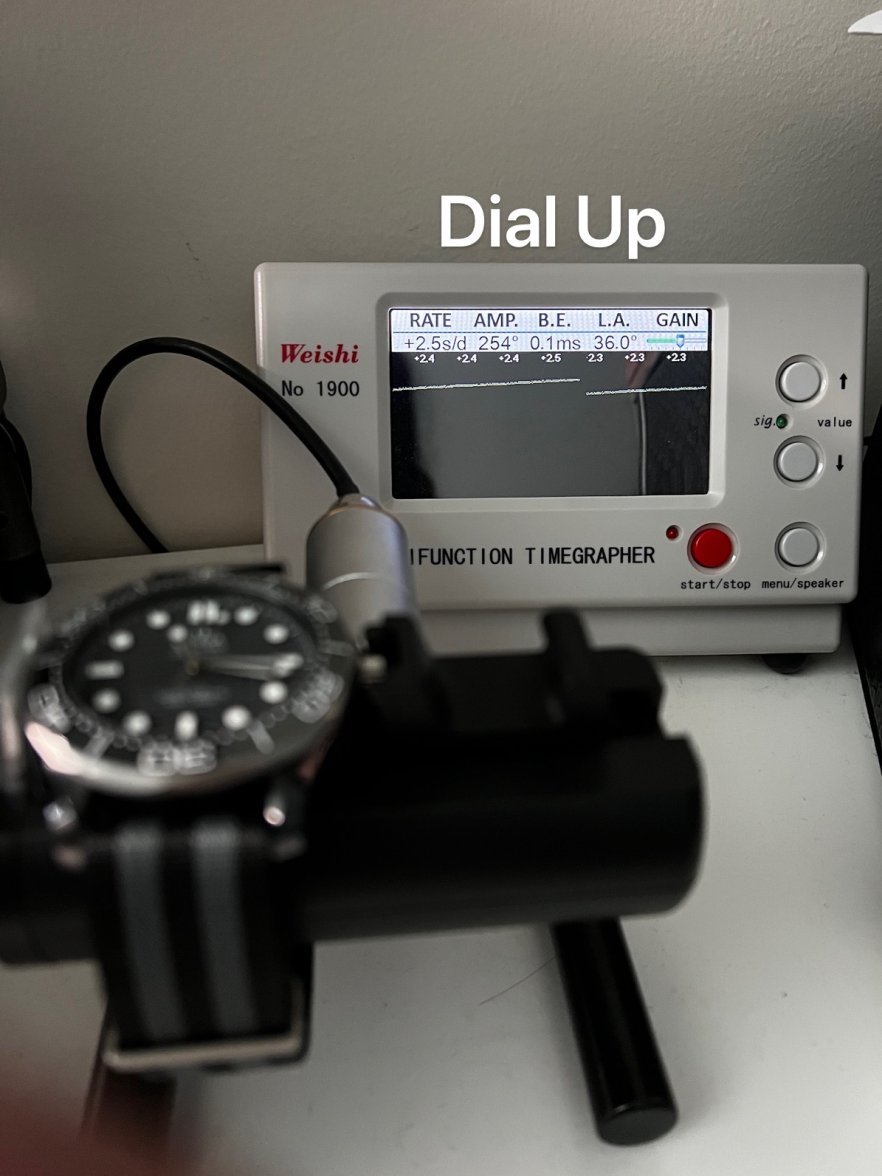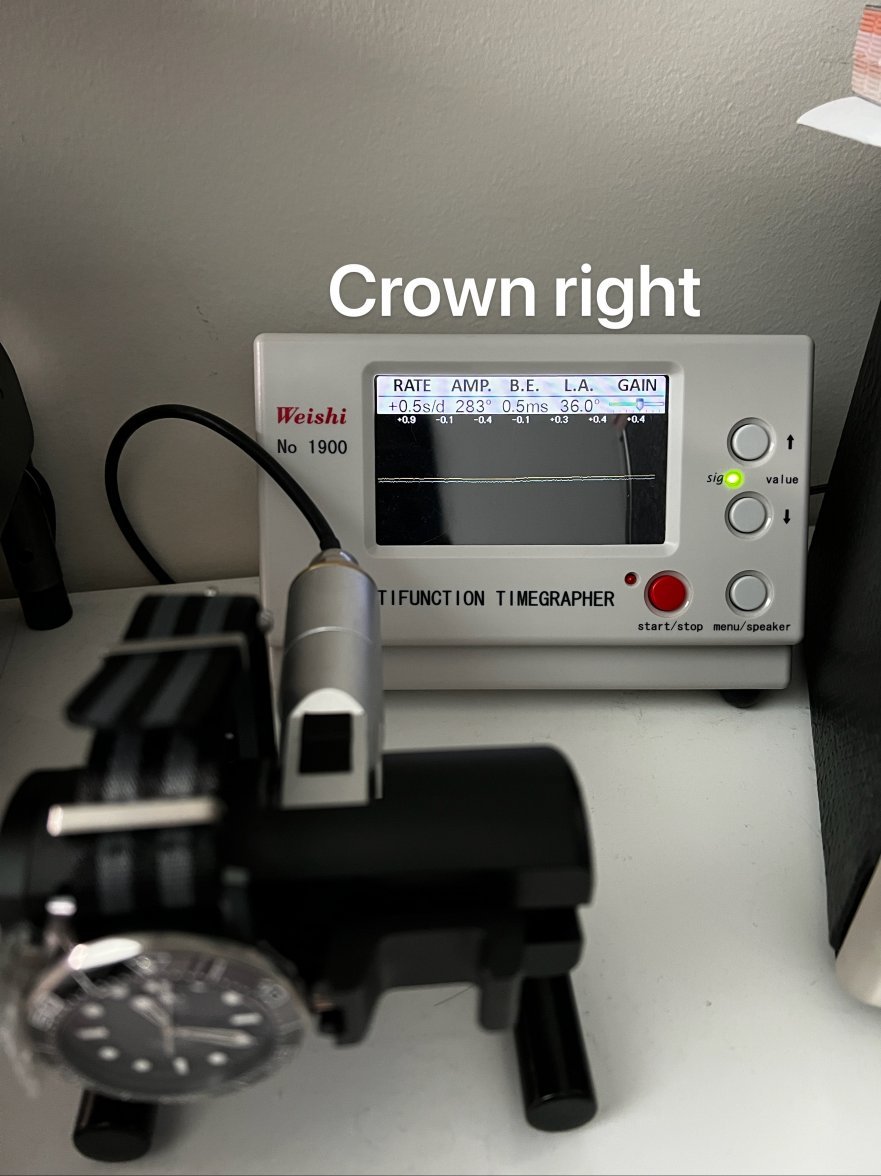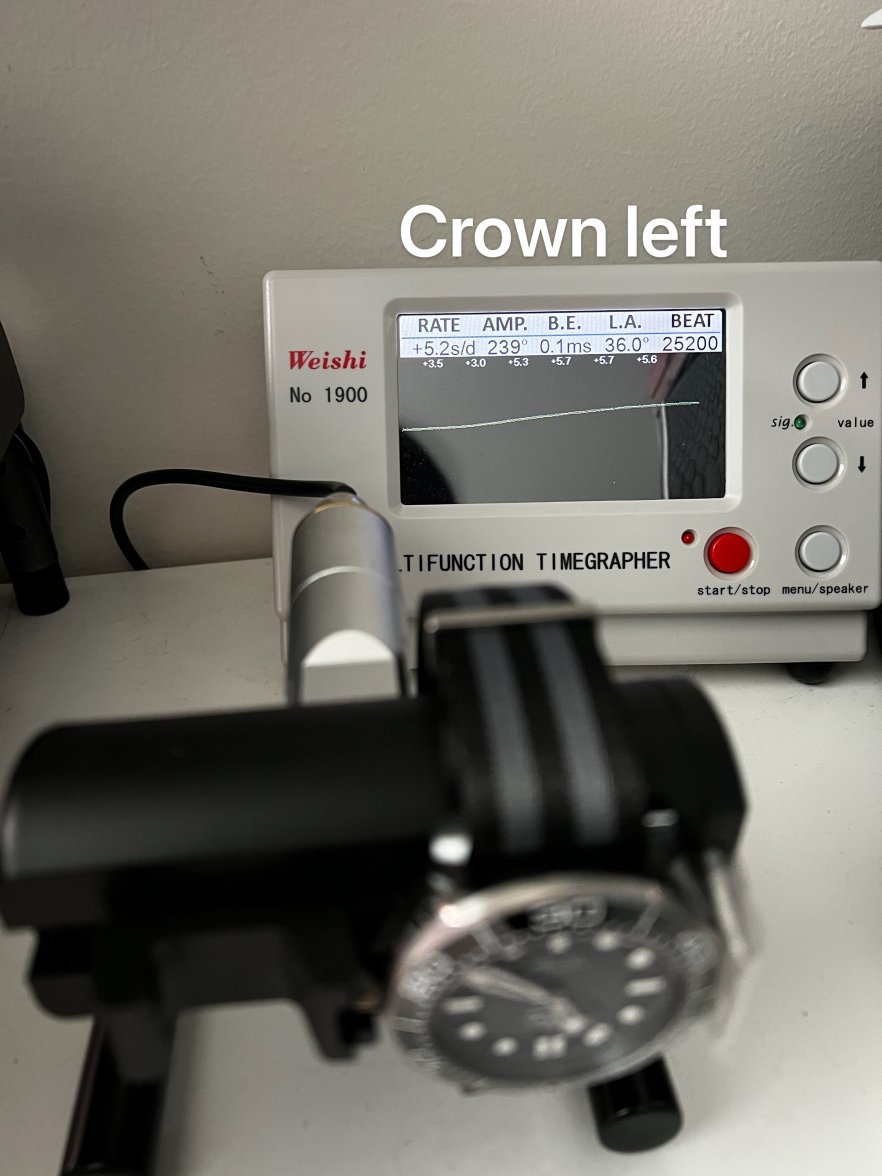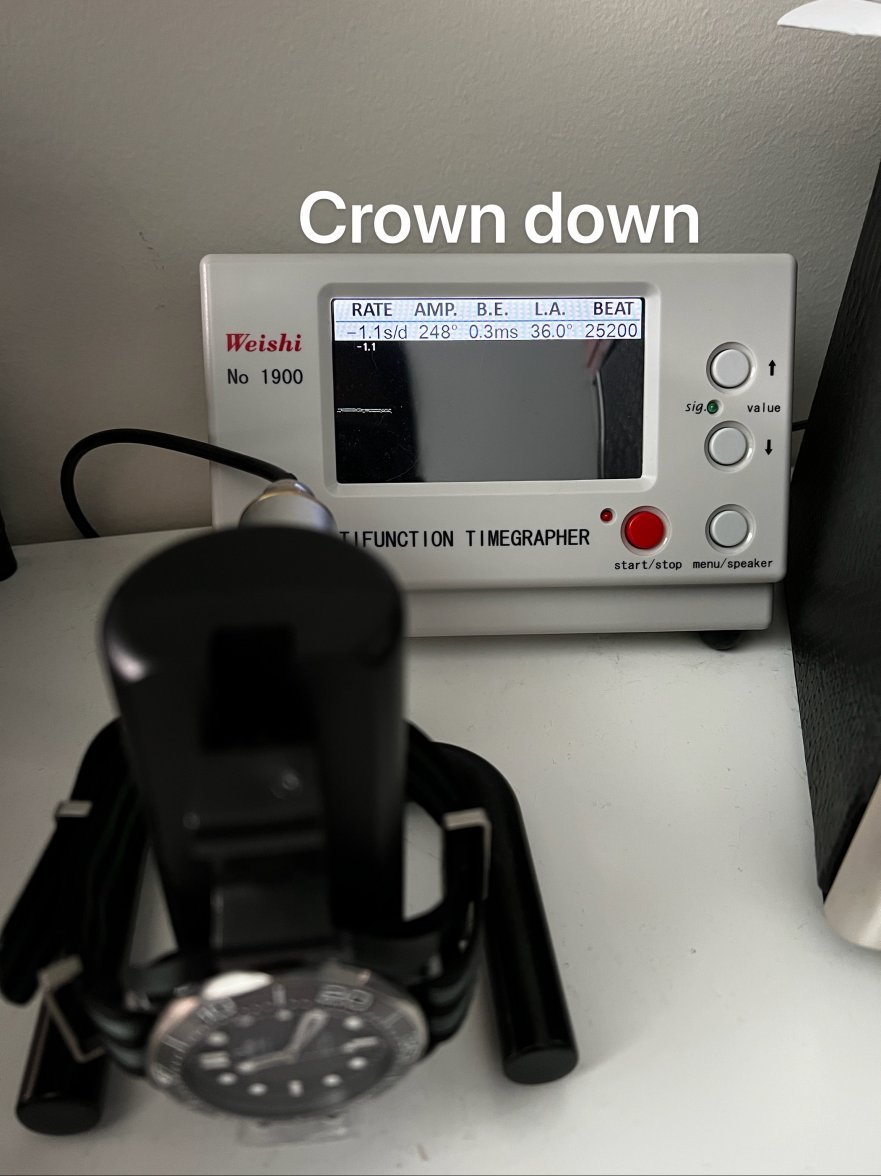Y.M1619
·Hi forums, I wish you all a fantastic holiday!
As I purchased a timegrapher recently, trying to deepen my understanding of my watches, I realized how little I know about beat error.
I have got mixed information about BE from the internet but my current belief is that I wouldn’t worry about BE number within 0.8ms for a modern watch unless it changes dramatically which indicates issues that would continuously damage the parts and worsen the movement performance. (Correct me is I am wrong, folks)
I have noticed a quite significant positional BE delta on my Seamaster 300m(with movement 8806), and I can’t tell if it indicates a problem. So I would love to learn from you guys about that.
The thing is, on dial up position, the BE is 0.1ms which is quite nice. But when I turn it to crown right position, the BE will suddenly expand to 0.5(or 0.6 when the power reserve runs low). Some say it indicates wear on balance wheel pivot. But I would be surprised if my 2019 Seamaster started to show wear and tear already.
I will attache a few timegrapher data to the post. Let me know how should I understand the positional delta. Many thanks!
As I purchased a timegrapher recently, trying to deepen my understanding of my watches, I realized how little I know about beat error.
I have got mixed information about BE from the internet but my current belief is that I wouldn’t worry about BE number within 0.8ms for a modern watch unless it changes dramatically which indicates issues that would continuously damage the parts and worsen the movement performance. (Correct me is I am wrong, folks)
I have noticed a quite significant positional BE delta on my Seamaster 300m(with movement 8806), and I can’t tell if it indicates a problem. So I would love to learn from you guys about that.
The thing is, on dial up position, the BE is 0.1ms which is quite nice. But when I turn it to crown right position, the BE will suddenly expand to 0.5(or 0.6 when the power reserve runs low). Some say it indicates wear on balance wheel pivot. But I would be surprised if my 2019 Seamaster started to show wear and tear already.
I will attache a few timegrapher data to the post. Let me know how should I understand the positional delta. Many thanks!



